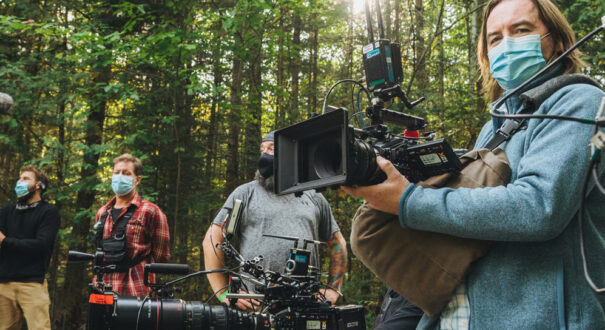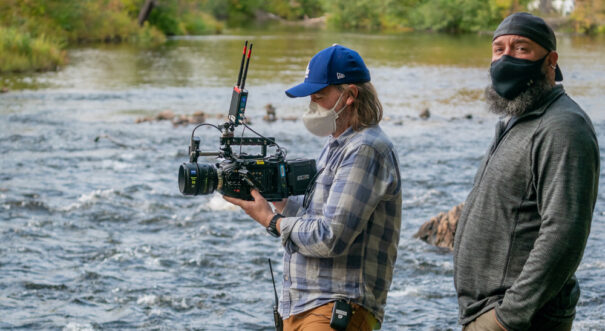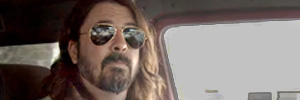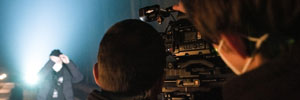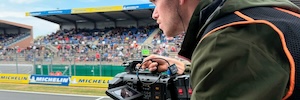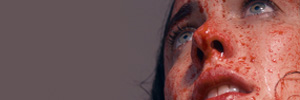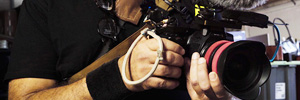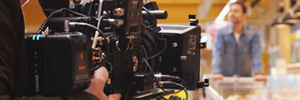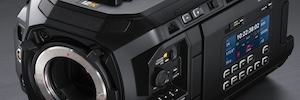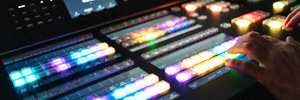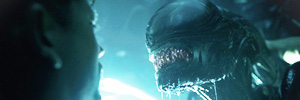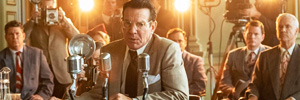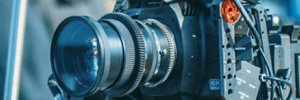‘The Desperate Hour’, filmed with the URSA Mini Pro 12K by Blackmagic
Phillip Noyce (director) and John Brawley (director of photography) chose the Blackmagic URSA Mini Pro 12K to shoot The Desperate Hour.
The Desperate Hour was shot during the peak of the Covid-19 outbreak in a remote region of Northern Ontario, Australia. In addition to the challenges of filming during the pandemic, the story posed interesting challenges in terms of photography. Despite the fact that the majority of the film is characterised by a single actress (Naomi Watts), due to the character’s constant running over rugged terrain, choosing the right approach to the photographic direction was paramount. Brawley decided to go with Blackmagic Design’s URSA Mini Pro 12K camera for both its compact size and the high resolution it offers: “The film had a lot of challenges because you’ve got a character who’s jogging, running or walking fast for most of the film.”
For Brawley, the key to the production was having a cinematic camera that was versatile enough to be manipulated in a variety of ways, ensuring wide coverage in a variety of circumstances, despite the challenges of the shots. Brawley implemented the use of four URSA Mini Pro 12K cameras and placed one of them on the back of an electric motorbike, mounted to a stabilised and motorised SRH3 head with remote control to shoot much of the footage: “The great thing I loved about that is that was a very small and lightweight package on the motorcycle. When we’re trying to literally weave in and out of trees and so on, you want a small head and a light camera package.”
A second camera was mounted within the parameters of a studio, while the third unit was used to capture supplementary shots or work with Watts’ doubles. There was also a fourth back-up device. The cinematographer also used the Pocket Cinema Camera 6K model for additional shots.
Shooting in 8K and 12K
Brawley and Noyce decided to go with 12K and 8K resolution from the outset, which helped the duo to stabilise the shots where necessary. In addition, Brawley highlights the ability of the Blackmagic URSA Mini Pro 12K to work in 8K mode without reducing the field of view: “An advantage there is that the rolling shutter read out time is halved. Roughly, the URSA Mini Pro 12K has a read out of about 15 milliseconds, but in 8K it’s half that, about 7 to 8 milliseconds. For intense action scenes, especially if we’re in profile or panning through trees, the rolling shutter in 8K mode helped to eliminate skewing of the verticals. If we were leading ahead of Naomi from the back of the ebike, we’d leave it on 12K, but if it was profile, panning, we’d go to 8K.”
Brawley was aware that 12K resolution (12,288 x 6480 pixels) would be a cause for concern in several areas of work, as higher resolution can lead to unforeseen issues: “I had a conversation with Naomi’s hair and makeup people because when they heard the 12K number they were saying, ‘Wait, you’re gonna put this camera one foot from her face?!’ The funny thing, though, is that when you have that kind of resolution actually the opposite happens. It’s almost like the structure of the pixels disappear and it becomes in a way more flattering.”
Brawley chose to combine 12K resolution with Zeiss Supreme lenses and was pleased with the results: “I had a conversation with Naomi’s hair and makeup people because when they heard the 12K number they were saying, ‘Wait, you’re gonna put this camera one foot from her face?!’ The funny thing, though, is that when you have that kind of resolution actually the opposite happens. It’s almost like the structure of the pixels disappear and it becomes in a way more flattering.”
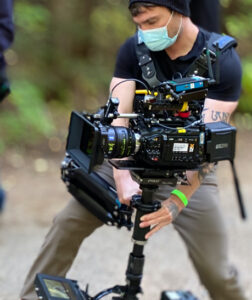 Shooting in Blackmagic RAW format
Shooting in Blackmagic RAW format
Beyond the technical aspects, Brawley knew that combining the URSA Mini Pro 12K camera with the Blackmagic RAW format would give him the images he needed for the feature: “It is unique the way the sensor works. We were shooting in autumn, and we knew the colors in the forest would be a big part of it. Production design chose the locations for the look, but the location was a character as well. With the URSA Mini Pro 12K we had a camera that could give that vibrancy, nuance and subtlety justice, because there are some beautiful autumnal colors in that forest. Especially when you’re grading, it feels like you see a lot more subtlety. When you’re looking at Naomi’s face, you can see the sky color reflected on her forehead.”
The compression mode selected during filming was also essential for data management. Brawley highlights some of the differences offered by the Blackmagic RAW format, compared to other codecs: “I used the Blackmagic RAW Constant Quality ‘Q’ settings. I recorded most of the film at Q3 because Q3 at 12K is about a terabyte an hour, and Q3 looked fantastic. The Constant Quality settings are interesting because the bitrate floats, with a bracket between low and high, and it isn’t based on motion; it’s based on what’s in focus. So, if something is out of focus, it uses less data, and if it’s in focus, it uses more data. It was interesting to realize and work that out. However, I never really felt like I ran into the wall of the compression itself.”
Ultimately, Brawley’s decision to go with the URSA Mini Pro 12K camera was based on a number of reasons that added value to the final product: “There were lots of reasons to choose the URSA Mini Pro 12K, but principally we realized we could have four camera bodies on set for the price of one, and the cameras gave us the extra resolution we might need for some stabilizing and shot resizing. The URSA Mini Pro 12K is physically smaller than other cinema cameras, especially for long handheld takes, which I preferred as well. And for the stabilizing head, it was a lightweight camera which made everything just a little bit easier to work with. So, there are a lot of reasons, as well as the image quality. Phillip was at the premiere at the Toronto International Film Festival, and he said the film looked amazing. In the end, that is the best reason to use any camera.”
この記事は気に入りましたか?
私たちの購読 ニュースレター そして、あなたは何も見逃すことはありません。



